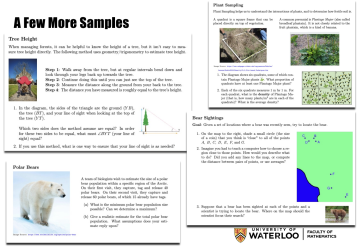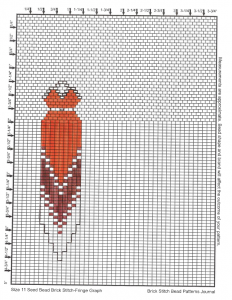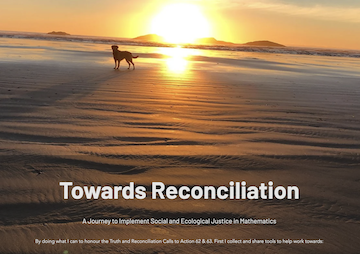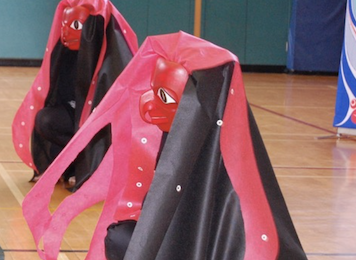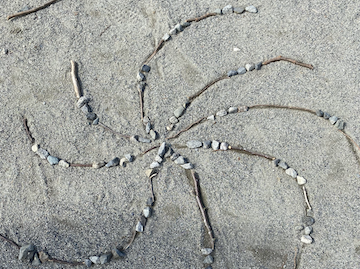AudienceContent AreaEducatorsFirst Peoples' Principles of LearningGrade LevelIndigenous StoryworkLand-Based LearningNumeracyPedagogical ApproachPlace-Based LearningPrimary (K-3)Resources


Connecting Land, Place, and Community
November 7, 2025
Alli and Janice worked with two primary teachers and their classes to create learning experiences that encouraged students to think about mathematics through connections to land, place, and community.
Launch
2D, 3D and spatial relationshipsAudienceContent AreaEducatorsFirst Peoples' Principles of LearningGrade LevelIntermediate (4-7)MeasurementPedagogical ApproachResources
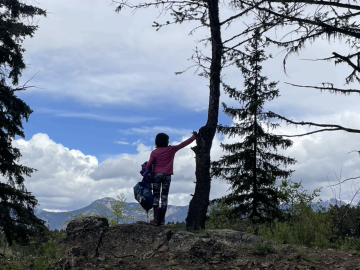

Numeracy Pen Pal Project
November 7, 2025
Alexis, Heather, and Kristin have collaboratively developed a math-focused unit incorporating Indigenous ways of Knowing and observations of the natural world. Their project connected Alexis and Heather’s classes through a penpal format, culminating in a land-based field trip.
Launch
Algebraic ReasoningAudienceContent AreaEducatorsFirst Peoples' Principles of LearningGrade LevelHigh School (8-12)Higher EducationPatterns and Linear RelationshipsPedagogical ApproachResources


Every Pattern Tells a Story
November 7, 2025
This NSF-funded research project engaged in story-sharing sessions with former students, friends, and community members to uncover the stories behind assignment contributions, enriching classroom learning and highlighting connections between algebra and Indigenous identity.
Launch
AudienceContent AreaEducatorsFirst Peoples' Principles of LearningFractionsGrade LevelHigh School (8-12)Indigenous StoryworkPedagogical ApproachProbabilityResources


Champagne Raccoons
November 7, 2025
Grounded in Indigenous Storywork, this task draws on the story of champagne-coloured raccoons from Saysutshun, an island provincial park in the territory of the Snuneymuxw First Nation near Nanaimo. The story invites students to wonder, make connections, and explore mathematical ideas.
Launch
AudienceEducatorsHigh School (8-12)Indigenous StoryworkIntermediate (4-7)Mathematical Habits of MindNumeracyPrimary (K-3)Professional Development


Circle of Learning – Indigenous Book Club
November 7, 2025
Chelcy and Monica led a project focused on the 4 R’s of Indigenous Storywork and BC math competencies. Their Circle of Learning Book Club explored Richard Wagamese’s The Animal People Choose a Leader through Zoom sessions and an in-person dinner gathering.
Launch
AudienceComputational FluencyEducatorsFirst Peoples' Principles of LearningGrade LevelHigh School (8-12)IntergenerationalPedagogical ApproachPedagogy of PlayProbability


Celebrate Indigenous Math Culture
November 7, 2025
Johanne and Brandi organized a math mentorship day at a local high school, creating opportunities for students, teachers, and staff to engage with Indigenous math and logic games in a positive and meaningful way.
Launch
AudienceComputational FluencyContent AreaEducatorsFirst Peoples' Principles of LearningFractionsGrade LevelIndigenous StoryworkIntermediate (4-7)NumberPedagogical ApproachPrimary (K-3)Resources


Mentorship in Action
November 7, 2025
Sam’s Grade 6/7 class guided Kindergarten buddies, inspired by Jen Whiffin and Joy Fast’s Outdoor Math and Indigenous Storywork principles of Reciprocity and Respect.
Launch
2D, 3D and spatial relationshipsAudienceContent AreaEducatorsFirst Peoples' Principles of LearningGrade LevelHigh School (8-12)Intermediate (4-7)MeasurementPedagogical ApproachResources


Indigenous Garden Project
July 31, 2024
This project merged math and Indigenous knowledge through a permaculture garden design. Students applied measurement concepts while exploring their land and culture.
Launch
2D, 3D and spatial relationshipsAudienceContent AreaData Collection and AnalysisEducatorsGrade LevelIndigenous StoryworkIndigenous StoryworkIntermediate (4-7)MeasurementNumberPatterns and Linear RelationshipsPedagogical ApproachPrimary (K-3)Professional DevelopmentResources
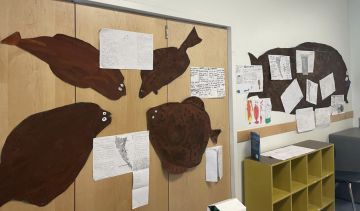

Building a Community of Inquiry through Indigenous Storywork Principles
July 31, 2024
Annie Simard, Sandra Fox, along with other teachers integrated Indigenous stories into math instruction. Guided by Indigenous Storywork, they created engaging math experiences.
Launch
AudienceContent AreaCulturally ResponsiveData Collection and AnalysisEducatorsFinancial LiteracyGrade LevelHigh School (8-12)NumberPedagogical ApproachProbabilityResources
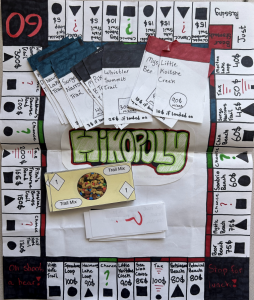

A Fomly Adventure: A decolonizing redesign of Foundations of Mathematics 12
July 31, 2024
Conventional teaching methods like lectures and tests have been replaced with collaboration and personalization through projects around ecotourism, and traditional root gardens.
Launch
2D, 3D and spatial relationshipsAudienceContent AreaEducatorsFirst Peoples' Principles of LearningGrade LevelHigh School (8-12)Intermediate (4-7)NumberParentsPatterns and Linear RelationshipsPedagogical ApproachPrimary (K-3)ResourcesSTEM
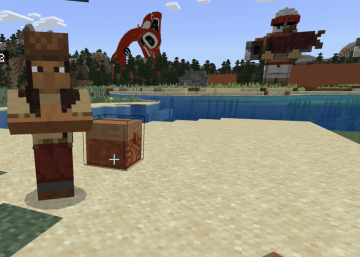

Indigenizing Minecraft through a Numeracy (STEAM) Lens
July 30, 2024
embark on a historical journey to a coastal village where students collaborate with Elders to learn sustainable winter preparation. Armed with this ancestral knowledge, students are tasked with designing their own thriving community
Launch
2D, 3D and spatial relationshipsAudienceContent AreaData Collection and AnalysisEducatorsGrade LevelIndigenous StoryworkIndigenous StoryworkIntermediate (4-7)Patterns and Linear RelationshipsPedagogical ApproachPlace-Based LearningPrimary (K-3)Resources


Place-Based Math Meets Indigenous Storywork
July 30, 2024
Jess Kyle’s project merged Indigenous Storywork and place-based math. By incorporating Sto:lo stories and territory story mats, students explored math through their surroundings, guided by their own curiosity.
Launch
2D, 3D and spatial relationshipsAudienceContent AreaEducatorsGrade LevelIntermediate (4-7)Land-Based LearningNumberPatterns and Linear RelationshipsPedagogical ApproachPlace-Based LearningProbabilityResources
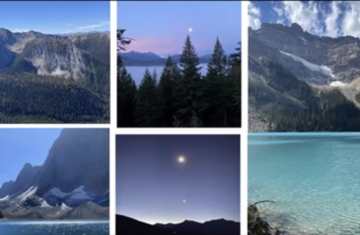

What Is The Most Beautiful Thing You Know About Cedar Trees?
July 30, 2024
Inspired by What is the Most Beautiful Thing You Know About Horses? Students explore their environments mathematically, culminating in a story as the finished product.
Launch
AudienceContent AreaCulturally ResponsiveEducatorsGrade LevelHigh School (8-12)Intermediate (4-7)MeasurementPedagogical ApproachResources
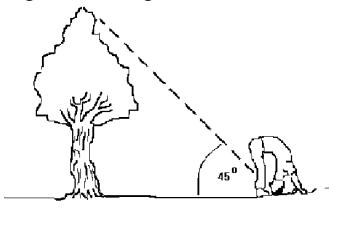

Estimating Tree Heights
July 30, 2024
Nikki demonstrates how ethnomathematics connects math to culture and everyday life. By incorporating Indigenous knowledge, she enhances student engagement and understanding. An included “Estimating Tree Height” activity brings learning outdoors.
Launch
AudienceContent AreaData Collection and AnalysisEducatorsGrade LevelHigh School (8-12)Intermediate (4-7)Pedagogical ApproachPlace-Based LearningResources


Bridging Worlds – Bringing Math to the Powwow
July 29, 2024
This lesson uses Powwow data to teach mean, median, mode, and range through circle graphs. Students explore data collection and central tendency.
Launch
AudienceComputational FluencyEducatorsFirst Peoples' Principles of LearningGrade LevelIndigenous StoryworkIndigenous StoryworkNumberParentsPedagogical ApproachPrimary (K-3)Resources


Hello Humpback
July 11, 2024
This lesson blends Indigenous stories and math. By exploring “Hello Humpback” written by Roy Henry Vickers, students connect with Indigenous Storywork and First Peoples’ Principles of Learning while learning number concepts.
Launch
AudienceContent AreaEducatorsFirst Peoples' Principles of LearningGrade LevelIndigenous StoryworkIndigenous StoryworkLand-Based LearningNumberParentsPedagogical ApproachPrimary (K-3)Resources


If Instead of a Person
July 10, 2024
This lesson blends Indigenous stories and math. By exploring “If Instead of a Person” written by Courtney Defriend students connect with Indigenous Storywork and First Peoples’ Principles of Learning while learning about number concepts and computational fluency.
Launch
AudienceComputational FluencyContent AreaEducatorsFirst Peoples' Principles of LearningGrade LevelIndigenous StoryworkIndigenous StoryworkNumberParentsPedagogical ApproachPrimary (K-3)Resources
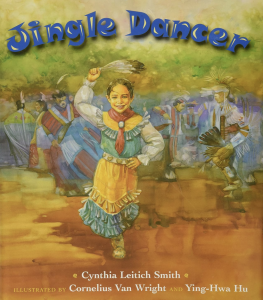

Jingle Dancer
July 8, 2024
This lesson blends Indigenous stories and math. By exploring “Jingle Dancer” written by Cynthia Leitich Smith, students connect with Indigenous Storywork and First Peoples’ Principles of Learning while learning about number concepts and practicing computational fluency.
Launch
AudienceComputational FluencyContent AreaEducatorsFirst Peoples' Principles of LearningGrade LevelIndigenous StoryworkIndigenous StoryworkMeasurementNumberParentsPedagogical ApproachPrimary (K-3)Resources
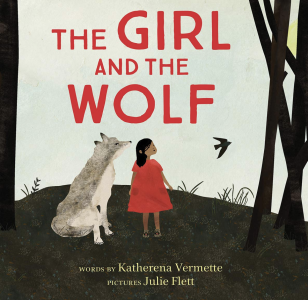

The Girl and the Wolf
July 8, 2024
This lesson blends Indigenous stories and math. By exploring “The Girl and the Wolf” written by Katherena Vermette, students connect with Indigenous Storywork and First Peoples’ Principles of Learning while learning about addition, subtraction and measurement concepts.
Launch
AudienceComputational FluencyContent AreaEducatorsFirst Peoples' Principles of LearningGrade LevelIndigenous StoryworkIndigenous StoryworkIntermediate (4-7)ParentsPatterns and Linear RelationshipsPedagogical ApproachResources


Peace Dancer
July 6, 2024
This lesson blends Indigenous stories and math. By exploring “Peace Dancer” by Roy Henry Vickers, students connect with Indigenous Storywork and First Peoples’ Principles of Learning while learning about properties of objects and shapes, equations and transformations.
Launch
AudienceContent AreaEducatorsFirst Peoples' Principles of LearningFractionsGrade LevelIndigenous StoryworkIndigenous StoryworkMeasurementNumberParentsPatterns and Linear RelationshipsPedagogical ApproachPrimary (K-3)Resources
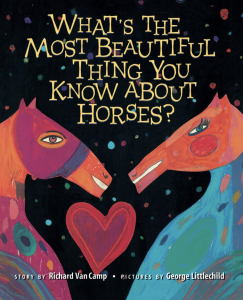

What’s the most beautiful thing you know about horses?
July 6, 2024
This lesson blends Indigenous stories and math. By exploring “What’s the Most Beautiful Thing You Know about Horses” written by Richard Van Camp students connect with Indigenous Storywork and First Peoples’ Principles of Learning while learning about patterns, fractions, and measurement.
Launch
AudienceContent AreaEducatorsFirst Peoples' Principles of LearningGrade LevelIndigenous StoryworkIndigenous StoryworkLand-Based LearningNumberParentsPatterns and Linear RelationshipsPedagogical ApproachPlace-Based LearningPrimary (K-3)Resources
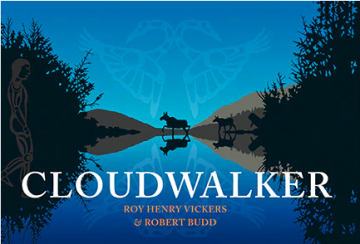

Cloudwalker
July 6, 2024
This lesson blends Indigenous stories and math. By exploring “Cloudwalker” by Richard Van Camp students connect with Indigenous Storywork and First Peoples’ Principles of Learning while learning about number concepts, and change in quantity.
Launch
AudienceContent AreaEducatorsFirst Peoples' Principles of LearningGrade LevelIndigenous StoryworkIntermediate (4-7)Land-Based LearningNumberPatterns and Linear RelationshipsPedagogical ApproachPlace-Based LearningResources


Cloudwalker
July 6, 2024
This lesson blends Indigenous stories and math. By exploring “Cloudwalker” by Richard Van Camp students connect with Indigenous Storywork and First Peoples’ Principles of Learning while learning about patterns, and number concepts.
Launch
2D, 3D and spatial relationshipsCreative-ArtsEducatorsHigh School (8-12)MeasurementPlace-Based LearningResources
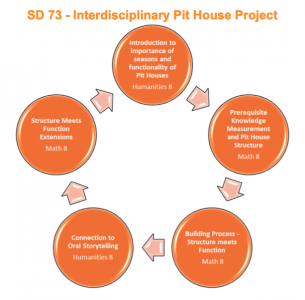

Pit House Project
September 19, 2023
In this hands-on project, students explore Secwepemc culture and learn how functionality affects the structure of a pit house.
Launch
2D, 3D and spatial relationshipsEducatorsHigh School (8-12)Indigenous StoryworkIntermediate (4-7)MeasurementNumberPedagogical ApproachResources
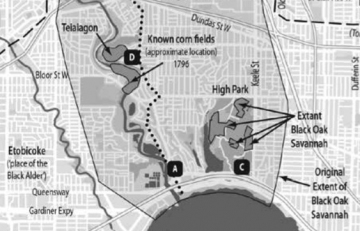

Storying the Land through Mathematics and Storywork
September 19, 2023
This essay, written by Dahlia Benedikt examines how six 14-year-olds and two facilitators explored how stories shape how we understand our environment and how mathematics could be used to understand the past and present activities and stories of High Park.
Launch
Creative-ArtsEducatorsNumberParentsPrimary (K-3)Resources
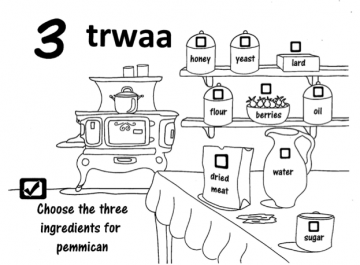

Learning Michif & Cree through Elementary Math
September 18, 2023
Learn Michif and Cree through this printable counting 1-10 activity book
Launch
EducatorsGrade LevelIndigenous StoryworkMeasurementPedagogical ApproachPrimary (K-3)Resources
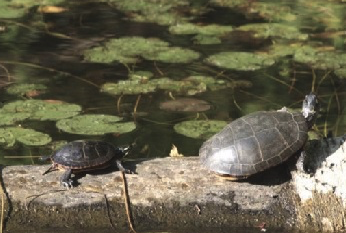

Math Can Have Meaning
September 16, 2023
In this activity students engage in a 3-Act-task surround Indigenous Storywork utilizing the Okanagan Legend “How Turtle Set the Animal Free”.
Launch
AudienceContent AreaEducatorsGrade LevelIndigenous StoryworkIndigenous StoryworkMeasurementPrimary (K-3)Resources


Exploring Elapsed Time Through Indigenous Story
September 16, 2023
Students explore elapsed time through Indigenous Storywork principles and the book “The First Salmon Run” by Rhonda Girard.
Launch
CalculusContent AreaEducatorsGrade LevelHigh School (8-12)IntergenerationalLand-Based LearningResources
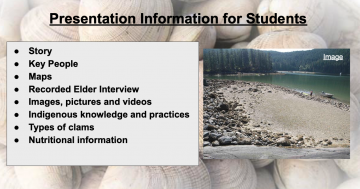

Clam Garden of the Coastal First Peoples: Sinusoidal Modelling
September 16, 2023
Allison Higinbotham’s lesson combines Indigenous knowledge and perspectives with mathematical inquiry to explore the history and ecological significance of clam gardens.
Launch
AudienceContent AreaCreative-ArtsEducatorsGrade LevelHigh School (8-12)Patterns and Linear RelationshipsPedagogical ApproachResources
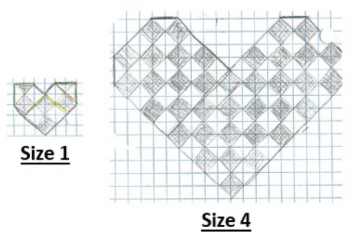

Math is All Around Us!
September 16, 2023
The authors in this resource demonstrate innovative ways to incorporate beading and cedar weaving into their algebra classrooms.
Launch
AudienceContent AreaEducatorsFractionsGrade LevelIndigenous StoryworkIndigenous StoryworkIntermediate (4-7)MeasurementPedagogical ApproachPrimary (K-3)Resources
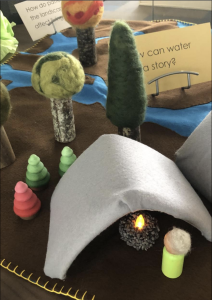

Opening the Basket Stó:lō Sitel Curriculum
September 16, 2023
This presentation showcases how three educators integrated Surrey Schools’ Opening the Basket Sto:lo Sitel curriculum into grades 1-4 math. Through hands-on activities like measuring fish and creating maps, students explored math concepts while learning about Indigenous culture. Indigenous Storywork guided the entire process.
Launch
2D, 3D and spatial relationshipsAudienceContent AreaCreative-ArtsEducatorsFirst Peoples' Principles of LearningGrade LevelHigh School (8-12)Intermediate (4-7)MeasurementPatterns and Linear RelationshipsPedagogical ApproachResources
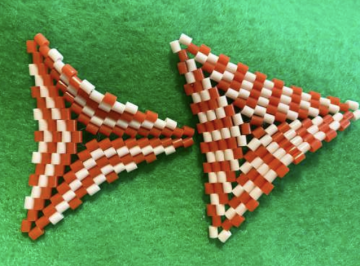

Beadwork + Mathwork
October 27, 2022
Allison Gardner’s resource integrates beading into grades 4-8 math through a First Peoples Principles of Learning lens. Using the Medicine Wheel as a starting point, students explore math concepts while learning about beadwork. The resource includes detailed lesson plans and references to relevant texts.
Launch
Creative-ArtsEducatorsFractionsGrade LevelIndigenous StoryworkIntermediate (4-7)NumberPedagogical ApproachPrimary (K-3)Proportional ReasoningResources
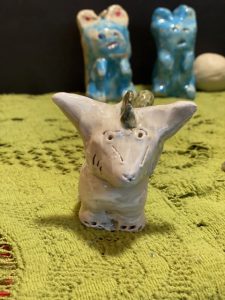

Supernatural Wasco and Proportion
October 27, 2022
Leighann Rodger’s seven-session lessons blend Haida Supernatural Beings with math. Students explore fractions and proportions by creating models of the supernatural being Wasco.
Launch
AudienceContent AreaCreative-ArtsEducatorsGrade LevelHigh School (8-12)Intermediate (4-7)Patterns and Linear RelationshipsPedagogical ApproachResources
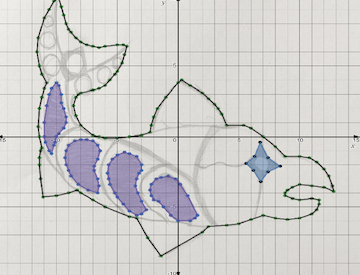

Desmos Art Project
October 27, 2022
This math lab uses Desmos to reinforce linear patterns, tables, and graphing. Students recreate art inspired by Kiki DesJarlais. A step-by-step guide and self-assessment are included.
Launch
Content AreaExperiential LearningFractionsGrade LevelIntermediate (4-7)MeasurementNumberPedagogical ApproachPlace-Based LearningPrimary (K-3)Resources


Using Seasonal Rounds to Teach Mathematics
October 27, 2022
Discover how seasonal rounds can transform early math learning. Jessica Naziel shares practical strategies for teaching number sense, fractions, and measurement through nature-based activities.
Launch
2D, 3D and spatial relationshipsAudienceContent AreaCreative-ArtsEducatorsGrade LevelIntermediate (4-7)MeasurementPedagogical ApproachResources


The Paper Drum Project
October 27, 2022
Megan Hanna’s Paper Drum Project merges math and culture, as students explore geometry and measurement while learning about Indigenous drumming traditions.
Launch
AudienceContent AreaCreative-ArtsEducatorsGrade LevelHigh School (8-12)Patterns and Linear RelationshipsPedagogical ApproachResources
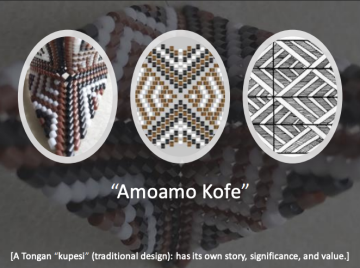

Exploring Math and Stories through Geometric Beading
October 27, 2022
Stan Manu’s presentation explores the convergence of beadwork, math, and Indigenous knowledge. A five-session project culminated in a community “hyper-blanket,” demonstrating the power of collaborative learning.
Launch
AudienceContent AreaCreative-ArtsEducatorsGrade LevelIntermediate (4-7)ParentsPatterns and Linear RelationshipsPedagogical ApproachResources


Non-linear Storytelling through Rotational Symmetry
October 27, 2022
Janelle Findlay’s lesson explores rotational symmetry through the lens of Coast Salish artist Susan Point’s storm sewer cover design. Students create their own symmetrical art while considering the storytelling potential of their designs.
Launch
AudienceContent AreaEducatorsGrade LevelIntermediate (4-7)Patterns and Linear RelationshipsResources


Squamish Weaving and Mathematics
October 27, 2022
Emily Gresham shares her experience from learning and collaborating with Anjeanette Dawson, a Squamish Weaver. Emily details seven outcomes she saw within her grade 6/7 classroom and school community when introducing Squamish weaving.
Launch
AudienceContent AreaEducatorsFinancial LiteracyFirst Peoples' Principles of LearningGrade LevelMeasurementNumberPatterns and Linear RelationshipsPedagogical ApproachPlace-Based LearningPrimary (K-3)Resources


Exploring Ecosystems and Mathematics
October 27, 2022
David Barnum shares how his Grade 3 students developed a deep connection to their environment through observation and journaling, aligning with First Peoples principles of learning.
Launch
AudienceCodingComputational FluencyContent AreaCreative-ArtsEducatorsGrade LevelIntermediate (4-7)MeasurementPatterns and Linear RelationshipsPedagogical ApproachPrimary (K-3)Resources


Coast Salish Weaving, Coding and Numeracy
October 27, 2022
Jess Kyle merges numeracy and Coast Salish weaving through coding, and exploring the role of non-Indigenous educators in teaching Indigenous knowledge.
Launch
AudienceContent AreaCreative-ArtsEducatorsGrade LevelNumberParentsPedagogical ApproachPrimary (K-3)Resources
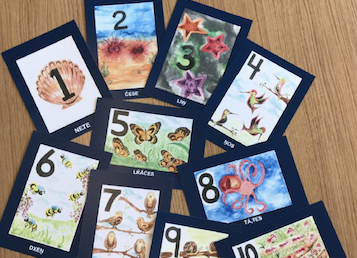

SENĆOŦEN Number Card Project
October 27, 2022
Sara Salemink presents a SENĆOŦEN number card project that blends language, art, and math for kindergarten students.
Launch
AudienceContent AreaEducatorsGrade LevelIntermediate (4-7)Patterns and Linear RelationshipsPrimary (K-3)Resources
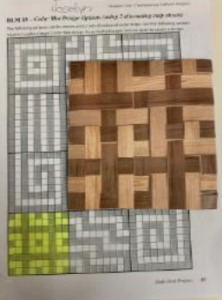

Cedar Math Inquiry
October 27, 2022
Melody Watson presents the “Cedar Math Inquiry,” a whole-school initiative that merges math with First Peoples’ perspectives through forest exploration, measurement, weaving, and bentwood box creation.
Launch
AudienceContent AreaCreative-ArtsEducatorsExperiential LearningGrade LevelHigh School (8-12)Intermediate (4-7)MeasurementPedagogical ApproachResources


Indigenous Math Connections
October 27, 2022
David Sufrin explores the integration of Indigenous knowledge and mathematics in the BC curriculum. Through projects like Yupik kayak design and igloo building, he demonstrates how to connect cultural teachings with math learning.
Launch
AudienceContent AreaEducatorsGrade LevelHigh School (8-12)Indigenous StoryworkIndigenous StoryworkIntermediate (4-7)NumberParentsPedagogical ApproachPrimary (K-3)Resources
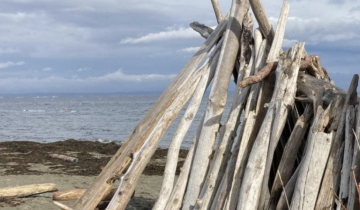

Outdoor Math – Noticing Water
October 24, 2022
Noticing Water is a project blending science, culture, and math through the lens of Indigenous Storywork. Using math as a tool, it aims to deepen students’ connection to local waterways by giving water a voice.
Launch
AudienceEducatorsExperiential LearningGrade LevelHigh School (8-12)Higher EducationIntermediate (4-7)Land-Based LearningParentsPedagogical ApproachPlace-Based LearningPrimary (K-3)Resources
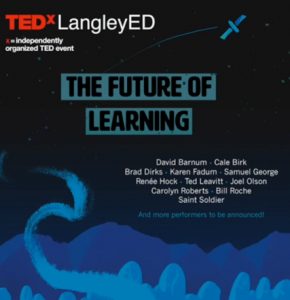

Rethinking Learning Environments: Community as Classroom
February 11, 2020
David Burnum’s TEDTalk on Rethinking Learning Environments explores “Community as a Classroom Framework” which is inspired by Gillian Kydd’s research.
Launch
AudienceContent AreaCulturally ResponsiveEducatorsGrade LevelHigh School (8-12)Higher EducationIntermediate (4-7)Pedagogical ApproachPrimary (K-3)Professional DevelopmentResources
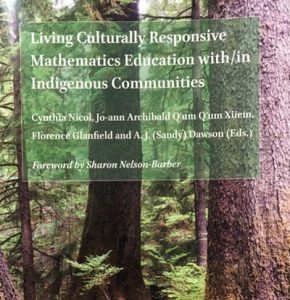

Living Culturally Responsive Mathematics Education with/in Indigenous Communities
February 11, 2020
This book explores how to create inclusive classrooms for Indigenous and non-Indigenous students worldwide. By prioritizing community, land-based learning, and Indigenous perspectives, it offers a framework for culturally responsive education.
Launch
AudienceContent AreaCulturally ResponsiveEducatorsGrade LevelHigh School (8-12)Higher EducationIntergenerationalIntermediate (4-7)ParentsPedagogical ApproachPrimary (K-3)Professional DevelopmentResources
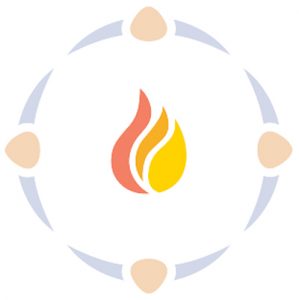

National Centre for Collaboration Indigenous Education NCCIE
February 6, 2020
The National Centre for Collaboration in Indigenous Education (NCCIE) is a hub for sharing Indigenous education stories. Explore their mathematics resources to discover programs and materials that bridge Indigenous knowledge and math learning.
Launch
AudienceContent AreaEducatorsFirst Peoples' Principles of LearningGrade LevelHigh School (8-12)Intermediate (4-7)Pedagogical ApproachPrimary (K-3)Professional DevelopmentResources


The Journey of a Lesson
February 5, 2020
Dr. Christine Younghusband, Max Sterelyukhin, and Jared Hamilton share their journey as non-indigenous mathematics educators on embedding local Indigenous content, First Peoples Principles of Learning, and Indigenous worldviews into their secondary classrooms utilizing BC’s math curriculum.
Launch
AudienceComputational FluencyData Collection and AnalysisEducatorsFirst Peoples' Principles of LearningGrade LevelIntermediate (4-7)NumberPedagogical ApproachPrimary (K-3)Resources


Indigenous Math Connections – David Sufrin
February 5, 2020
David Sufrin highlights how student teachers integrated Aboriginal culture and math through projects like spearfishing and berry picking. These activities involved counting, estimating, graphing, and language development.
Launch
2D, 3D and spatial relationshipsAlgebraic ReasoningAudienceContent AreaCulturally ResponsiveData Collection and AnalysisEducatorsFractionsGrade LevelHigh School (8-12)MeasurementNumberParentsPatterns and Linear RelationshipsPowers, Radicals, PolynomialsProbabilityResources
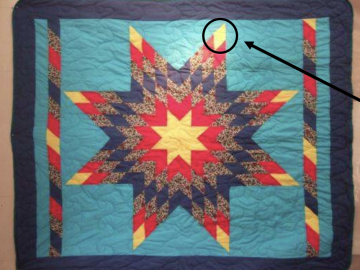

Grade 8 Math Questions
February 5, 2020
Paul Beland created a set of problem-solving questions to follow chapters one through eight in the grade 8 mathematics curriculum.
Launch
AudienceContent AreaCreative-ArtsEducatorsGrade LevelIntermediate (4-7)MeasurementPedagogical ApproachResources
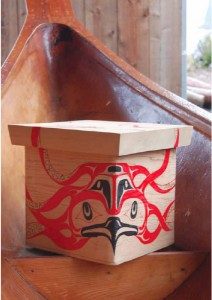

Bentwood Boxes
February 5, 2020
Tluuwaay Waadluxan Math Adventures Problem geared towards bentwood boxes.
Launch
AudienceContent AreaCreative-ArtsEducatorsGrade LevelHigh School (8-12)Intermediate (4-7)ParentsPatterns and Linear RelationshipsPedagogical ApproachPrimary (K-3)Resources


Permuted Art
February 5, 2020
Dr. Shawn Desauliners’ Permuted Art offers a unique puzzle experience. Participants can create a striking salmon eye image by sliding and rearranging squares.
Launch
AudienceContent AreaCreative-ArtsEducatorsGrade LevelHigh School (8-12)Higher EducationIntermediate (4-7)ParentsPatterns and Linear RelationshipsPedagogical ApproachPrimary (K-3)Resources
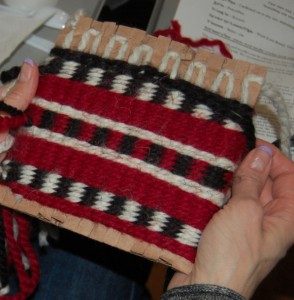

Weaving a Quarter Bag Instructions
February 5, 2020
Anjeanette Dawson shares the instructions for weaving a quarter bag that can be adapted to any grade level.
Launch
2D, 3D and spatial relationshipsAlgebraic ReasoningAudienceCalculusComputational FluencyContent AreaCreative-ArtsCulturally ResponsiveData Collection and AnalysisDecimalsEducatorsFractionsGrade LevelHigh School (8-12)Higher EducationIntermediate (4-7)MeasurementNumberParentsPatterns and Linear RelationshipsPedagogical ApproachPowers, Radicals, PolynomialsPrimary (K-3)ProbabilityProportional ReasoningResourcesSpatial ReasoningTrigonometry
2D, 3D and spatial relationshipsAudienceContent AreaData Collection and AnalysisEducatorsFirst Peoples' Principles of LearningGrade LevelHigh School (8-12)Intermediate (4-7)NumberPatterns and Linear RelationshipsPedagogical ApproachPrimary (K-3)ProbabilityResources


Math First Peoples 8/9
February 5, 2020
The Math First Peoples Teacher Resource Guide empowers BC educators to transform math learning through Indigenous perspectives, aiming to boost student success.
Launch
2D, 3D and spatial relationshipsAudienceContent AreaCulturally ResponsiveData Collection and AnalysisEducatorsGrade LevelIntergenerationalIntermediate (4-7)Land-Based LearningNumberParentsPatterns and Linear RelationshipsPedagogical ApproachPlace-Based LearningPrimary (K-3)ProbabilityResources
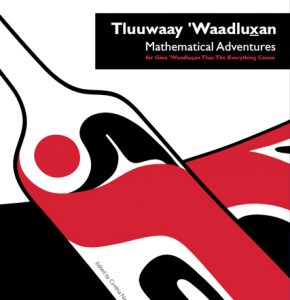

Tluuwaay ‘Waadluxan Mathematical Adventures
February 5, 2020
Tluuwaay ‘Waadluxan Mathematical Adventures offers fresh perspectives on math through land-based learning.
Launch
AudienceContent AreaCulturally ResponsiveEducatorsGrade LevelHigh School (8-12)Higher EducationIntermediate (4-7)Pedagogical ApproachPrimary (K-3)Professional DevelopmentResources
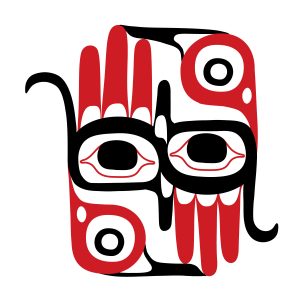

Bibliography of Indigenous Math Related Resources
February 5, 2020
This bibliography compiles resources on mathematics education, encompassing theory, pedagogy, curriculum, teacher development, student learning, assessment, policy, and research data
Launch
